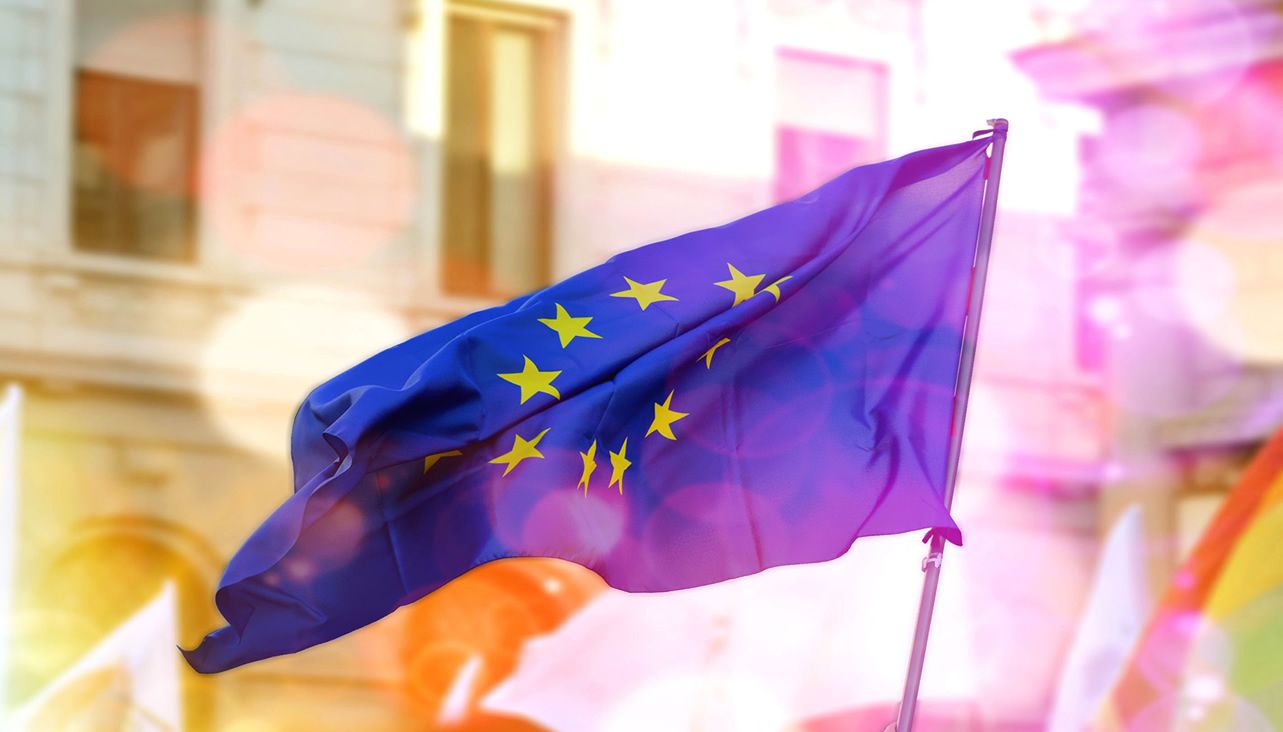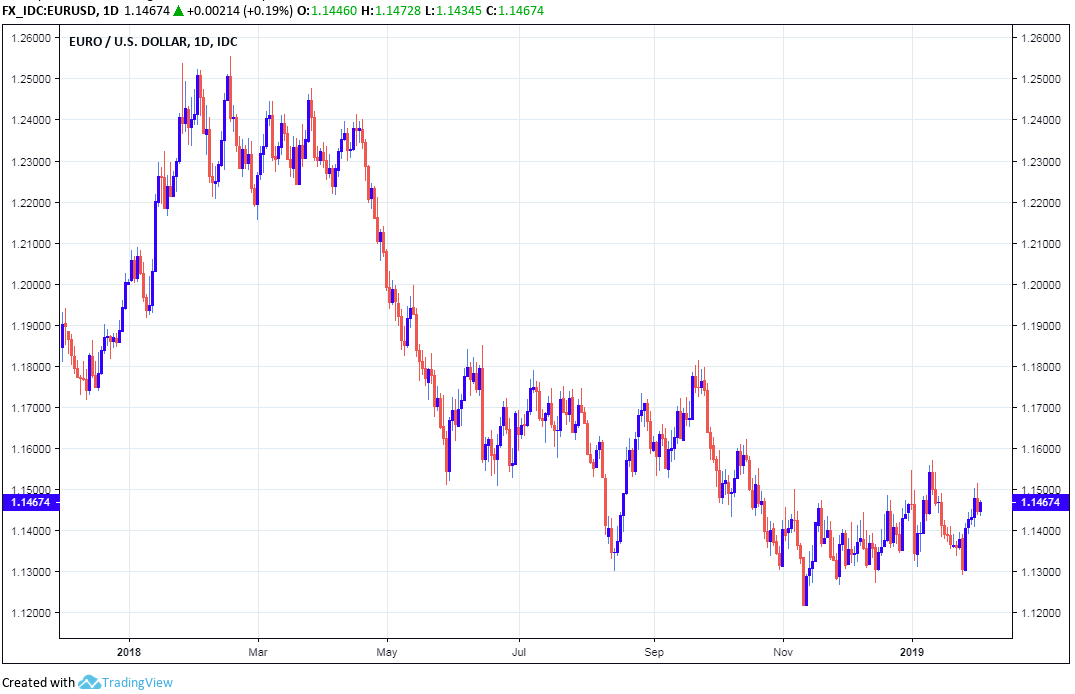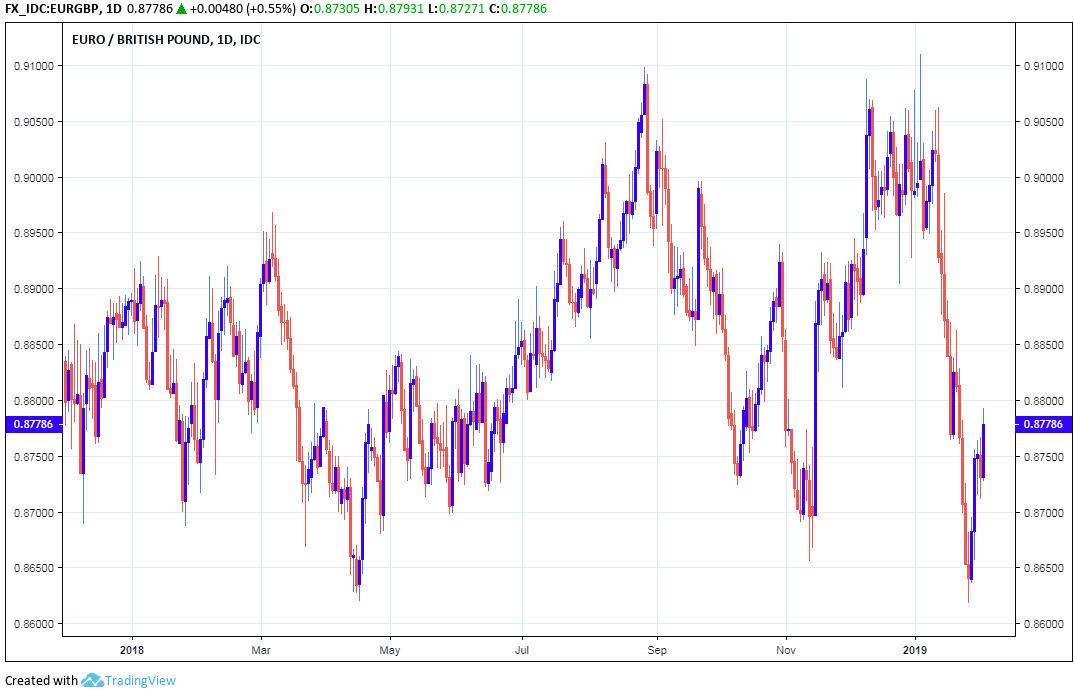Euro Boosted by Surprise Increase in Core Inflation
- Written by: James Skinner
 Image © Adobe Images
Image © Adobe Images
- EUR edges higher as core inflation post surprise January increase.
- Offers hope to EUR bulls but one numbet is not a trend says economist.
- EUR's short-term outlook hinged largely on March ECB rate meeting.
The Euro was boosted in the final session of the week by official data revealing a surprise increase in the rate of core inflation for the month of January, which bodes well for the European Central Bank (ECB) outlook although economists have warned that one month alone does not make a trend.
Eurozone inflation fell from 1.6% to 1.4% in January, in line with the consensus among economists, as the bust in oil prices seen during the final quarter of 2018 worked its way through to petrol prices at fueling stations.
Core inflation, which ignores goods like fuel, alcohol and tobacco because of the distorting impact they have on underlying trends in domestic price pressures, rose from 1% to 1.1% when economists had looked for it to remain unchanged.
That is a positive development as far as the ECB will be concerned, and one that could mean the market has become too pessimistic on the outlook for consumer price growth, which is essential if the central bank is ever to be able to lift its interest rates from their crisis-era record lows.
"The core rate was pushed higher by a jump in services inflation, to 1.6% from 1.3% in December, offsetting a dip in non-energy goods inflation to 0.3%, from 0.4% in December. One month does not make a trend, but this divergence is consistent with rising domestic inflation pressures, due to higher wage growth, while inflation pressures in tradable goods remain subdued," says Claus Vistesen, chief Eurozone economist at Pantheon Macroeconomics.
Markets care about the inflation data because it has significant influence over European Central Bank interest rate decisions, which are the raison d'être for most moves in exchange rates.
Changes in rates are normally only made in response to movements in inflation but impact currencies through the push and pull influence they have on capital flows as well as their allure for traders.

Above: Euro-to-Dollar rate shown at daily interval.
The Euro-to-Dollar rate was quoted 0.15% higher at 1.1465 during the morning session Friday and is now unchanged for the year after reversing an earlier loss during Thursday trading.
"EUR/USD is consolidating at the 100 day moving average at 1.1440, it remains bid in its range and we look for gains to the 200 day ma at 1.1559. We would allow for minor dips to hold at 1.1390, ahead of further gains. It remains underpinned by the 2016-2019 uptrend at 1.1289," says Karen Jones, head of technical analysis at Commerzbank.
The Euro-to-Pound rate was quoted 0.52% higher at 0.8778 and has now fallen just -2.37% for the 2019 year-to-date after also rising notably during the Thursday session.
"EUR/GBP fell 5% in 3 weeks this month, creating 15-month highs and lows in the prices. It'll probably settle into a 0.865--0.8850 range for a while now, with a break back over 0.90 only really on the cards either if EUR/USD breaks higher (unlikely) or a no-deal Brexit becomes more likely," says Kit Juckes, chief FX strategist at Societe Generale.

Above: Euro-to-Pound rate shown at daily intervals.
"The decline in oil prices is working its way through to fuel prices in the eurozone, causing headline inflation to drop," says Bert Colijn, an economist at ING Group. "The big question remains what will happen to core inflation, which has been stubbornly stuck at around 1% for ages."
Markets have been briefed repeatedly to expect an initial interest rate rise "once through the summer of 2019". But the ECB needs economic growth to be sufficient enough for it to lift inflation back toward the target of "close to but below 2%" if it is to be able to justify raising rates.
A rate hike is what the currency market wants to see but core inflation has barely moved from it's January 2016 level of 1% in recent years and is only 0.4% higher than it was in January 2015, when the ECB was planning to unveil a record-setting monetary stimulus package.
"If the economy picks back up as transitory factors fade out, it is likely that core inflation will slowly but gradually rise. That remains the base case for the moment, also for the ECB. The ECB’s own expectations of 1.4% core inflation for the year look a tad optimistic already," Colijn adds. "Downward adjustments could well happen in March."
The Euro area economy grew by just 1.8% in 2018, down sharply from 2.3% in 2017, after growth slowed at the beginning of the year and a litany of headwinds further stymied activity during the second half.
This year's outlook also appears to have deteriorated rapidly so far in January and ECB officials have already hinted that they could defer the date of an initial increase in the bank's interest rates until well into 2020 because of the slowdown.
"We still think growth may recover to a quarterly average of 0.3% this year, but this would still bring the annual growth rate down to only around 1.0%. And the risks to our below-consensus forecasts are increasingly to the downside," warns Andrew Kenningham, chief Europe economist at Capital Economics.
For the single currency, a lot will depend on what the ECB says at its March monetary policy meeting as well as what happens further afield, outside of Europe, over the coming months.
Failure by U.S. and Chinese negotiators to end the trade war and, or, a continued slowing of China's economy would both bode ill for the Euro outlook. So too would a messy Brexit.
But an end to the trade war, stabilisation of China's economy and a smooth Brexit are all possible. And each would serve as an effective ointment for at least some of Europe's economic ailments and potentially help the ECB in its mission to "normalise" the bloc's monetary policy.
Time to move your money? Get 3-5% more currency than your bank would offer by using the services of foreign exchange specialists at RationalFX. A specialist broker can deliver you an exchange rate closer to the real market rate, thereby saving you substantial quantities of currency. Find out more here.
* Advertisement




